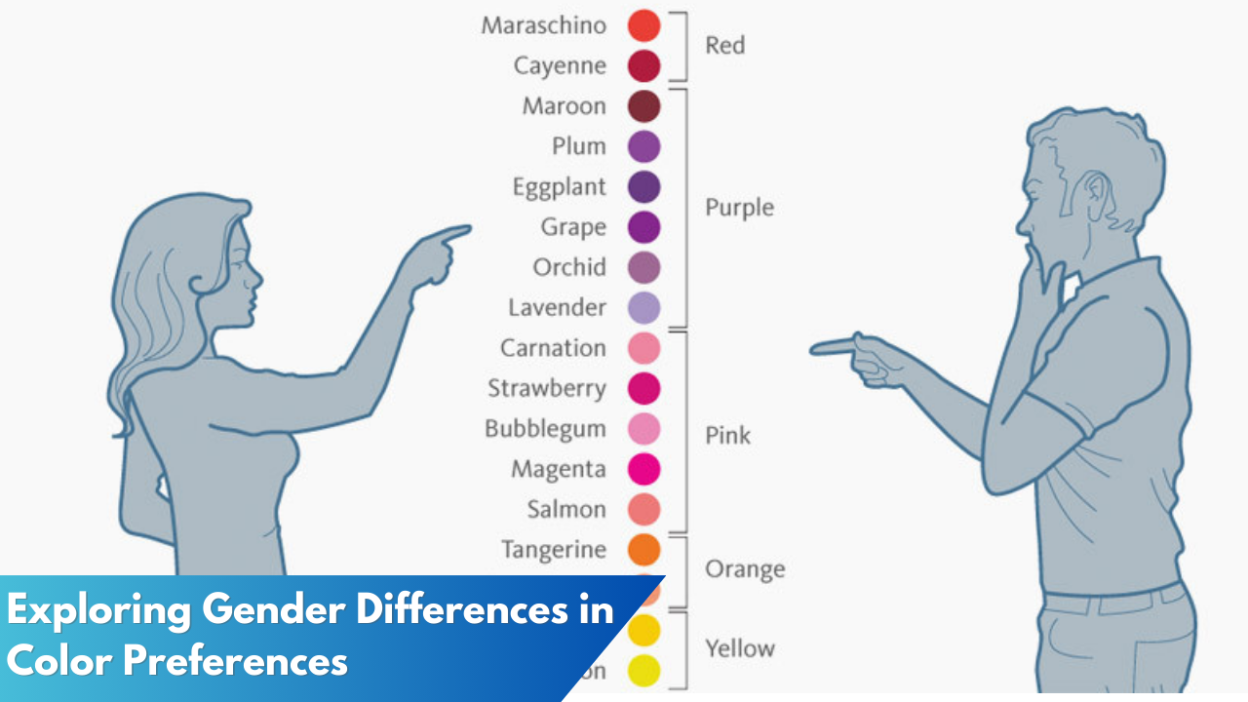The way individuals perceive and choose colors has long intrigued psychologists, marketers, and designers alike. A multitude of factors, including cultural background, personal experiences, and even gender, can influence one’s color preferences. While societal norms and marketing strategies often reinforce certain color stereotypes, it is essential to dive deeper into the scientific and psychological aspects of gender-based color choices. This article explores the intricate relationship between gender and color preferences, aiming to shed light on the underlying factors that shape our fondness for specific hues.
Analyzing Gender and Color: Unraveling Preferences
The study of color preferences across genders has consistently revealed some striking trends. H

istorically, societies have often ascribed certain colors to specific genders, with blue frequently associated with boys and pink with girls. These conventions are more than just societal norms; they have been backed by research indicating that men and women often exhibit distinct preferences for certain colors. For instance, studies indicate that men generally prefer colors like blue, green, and black, whereas women tend to gravitate towards softer shades such as pink, purple, and pastels. Understanding these tendencies is crucial for industries ranging from fashion to marketing, where color can significantly impact consumer engagement and product appeal.
However, it’s important to consider the complexity and variability within these broad generalizations. Recent research challenges the rigidity of traditional color stereotypes, suggesting that color preferences are not fixed and can change over time due to personal or societal shifts. For example, cultural influences and evolving gender roles can lead to a gradual blending of color preferences across the spectrum. In some cultures, colors that are traditionally seen as feminine in Western societies might not bear the same gender connotations, further complicating the narrative. Such nuances reveal that while gender may play a role in color preference, it is by no means the sole determinant.
Moreover, psychological theories offer insights into why these gender differences might exist. Evolutionary psychology suggests that color preferences may have roots in our ancestral past, with women historically being gatherers who required a keen eye for ripe fruits and edible plants. This might explain a preference for colors associated with ripeness and flowering, such as reds and pinks. On the other hand, men, traditionally hunters, might have developed an affinity for colors that offer camouflage or are associated with open skies and clear waters, like blues and greens. While these theories provide an interesting perspective, they are just one piece of the puzzle in understanding gender-based color preferences.
Insights into Color Choices Across Gender Lines

Modern marketing strategies leverage these gender-based color preferences to tailor products and advertisements. By understanding color psychology, brands can connect with their target demographic more effectively. For instance, products aimed at women often feature packaging in softer, pastel shades, while those aimed at men might use bolder and darker colors. This strategic use of color can enhance brand identity and consumer loyalty, as individuals tend to be drawn to products that resonate with their personal color preferences.
Yet, the landscape of color preferences is evolving alongside changing societal views on gender. Millennials and Generation Z, for example, are challenging traditional gender norms and embracing a more fluid understanding of identity. This shift is reflected in their color choices, which often defy conventional gender boundaries. As a result, there is a growing trend towards gender-neutral marketing, where products are designed with colors that appeal to a broad audience, irrespective of gender. This approach not only acknowledges the diversity of consumer preferences but also champions inclusivity and equality.
Furthermore, the rise of digital technology has amplified individual expression, allowing for a more personalized approach to color choice. Social media platforms have become a space where gender stereotypes can be challenged, and unique preferences can be celebrated. Influencers and brands that push against gender norms in color usage often find a receptive audience eager to embrace diversity. This shift indicates a broader cultural movement towards dismantling rigid gender norms, suggesting that future research on color preferences will need to account for these dynamic changes.
The exploration of gender differences in color preferences is a testament to the complex interplay between biology, culture, and personal identity. While traditional views have long dominated the conversation, there is a growing recognition of the fluidity and diversity of color choices across gender lines. As societal norms continue to evolve, so too will our understanding of how gender influences color preferences. By acknowledging the multifaceted nature of this relationship, industries and individuals alike can foster a more inclusive and vibrant world, where color is seen not just as a marker of gender, but as a form of personal expression and creativity.



